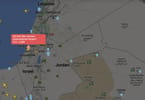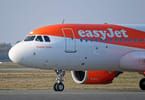Welcome to Northern Ireland’s latest tourist attraction: 100,000 marchers wearing sashes, bowler hats and white gloves for parades that have often ended in pitched battles between Protestants, Catholics and police.
More than 3,000 marches, many celebrating an historic Protestant victory over Catholics, take place each year across the U.K. province, climaxing in parades on July 12 that attract an estimated 500,000 participants and spectators.
“Until 2005, hotels in Belfast closed because of the parades,” says Robert Saulters, grand master of the Orange Order, which organizes many of the marches. “We hope now we can help bring them tourists.”
The Protestant-only Order is trying to transform itself as peace takes root after three decades of political violence. July 12 lies at the heart of that effort, with the organization rebranding the day Orangefest to draw North American tourists instead of sparking riots. Yet old tensions linger.
“If I found out I had cancer in the morning, I’d walk into the middle of them and blow them up,” says Anne-Marie O’Dwyer, 51, a Catholic resident of a Belfast street that Orangemen try to march through every year. “They are sectarian bigots.”
This year, Ireland’s tourist authority is inviting visitors to enjoy the “carnival atmosphere” of Orangefest, which it describes as one of Europe’s largest cultural festivals. The All- Ireland agency was set up as part of an accord that led to the creation of a power-sharing government last year, settling a conflict that claimed 3,500 lives.
`Small Steps’
For the first time, the parades will feature floats depicting cross-community interests such as the Belfast-built Titanic. In a bid to curb the drinking that fuels anti-Catholic chanting, revelers will be reminded of laws against public boozing.
Tourist authorities are also training Order members on how to greet visitors, who will receive information on the organization’s history. The Order says it wants to attract U.S. and Canadian visitors seeking to trace their lineage.
“It’s small steps, and even stopping drinking at parades is hard,” says the Rev. Mervyn Gibson, chaplain to the Order in Belfast. “But we hope to provide tourists with something they can enjoy. This is authentic Protestant culture.”
The Order was founded in 1795 to celebrate the Battle of the Boyne, when King William of Orange defeated the Catholic King James in a battle to maintain Protestant supremacy in Ireland.
The organization aims to unify Protestants against calls for an end to British rule. Some Catholics, who tend to favor a united Ireland, say marches stir up hatred.
Taunting Neighbors
At a 1992 parade in Belfast, Orangemen held up five fingers as they marched near a betting shop where months earlier five Catholics had been murdered.
The Order does “nothing but cause trouble and try to rub our noses in it,” said O’Dwyer, whose mother was killed in a bomb attack in 1972.
Since the mid-1990s, police have routed some marches away from Catholic neighborhoods. In 1995 and 1996, confrontations blocked roads, shut ports and sparked riots that injured hundreds of protesters and police.
Three years ago, protesters burned cars, threw homemade bombs and fired shots at police after authorities diverted a march from its traditional path through a Catholic nationalist area. At least 60 officers were injured.
Orange Order members, who refer to themselves as brothers, wear hats, gloves and bright orange sashes when on parade. Some carry banners depicting biblical scenes or imagery drawn from Northern Ireland’s violent past. In 1975, five members were murdered in an attack on a lodge meeting.
1690 Battle
Drummers use curved bamboo canes to beat Lambeg drums, a giant double-headed instrument that accompanied William into his 1690 battle.
“If the event becomes imaginative enough it could be an attraction,” says Dominic Bryan, director of the Institute of Irish Studies at Queen’s University Belfast. “The Order needs to come to a point where the conflict, especially with Catholics, is taken out of their parades.”
There’s still a way to go. At one of the smaller parades in Belfast that precedes the July 12 festival, marching bands continued to belt out anti-Catholic tunes, stopping to sip vodka and beer. A favorite lyric for some is, “We are up to our necks in Fenian (Catholic) blood, surrender or die.”
The march, known as the Tour of the North, on June 20 was diverted from its usual route.
“No matter what the changes we’ll keep marching just the way we have done for centuries,” local Orange leader Billy Lochrie said before handing a protest letter to the watching police. “We hope tourists will march with us.”
Last year, the Order took part in the Smithsonian Folk Life Festival in Washington to help revive interest in the province. In May, the Order published a tourist map, which follows the route of King William.
The next step may be persuading Belfast authorities to let stores stay open on July 12 for the first time next year.
“Political times have changed,” Saulters says. “We need to take stock of that.”
bloomberg.com
WHAT TO TAKE AWAY FROM THIS ARTICLE:
- The Order was founded in 1795 to celebrate the Battle of the Boyne, when King William of Orange defeated the Catholic King James in a battle to maintain Protestant supremacy in Ireland.
- The All- Ireland agency was set up as part of an accord that led to the creation of a power-sharing government last year, settling a conflict that claimed 3,500 lives.
- At one of the smaller parades in Belfast that precedes the July 12 festival, marching bands continued to belt out anti-Catholic tunes, stopping to sip vodka and beer.






















